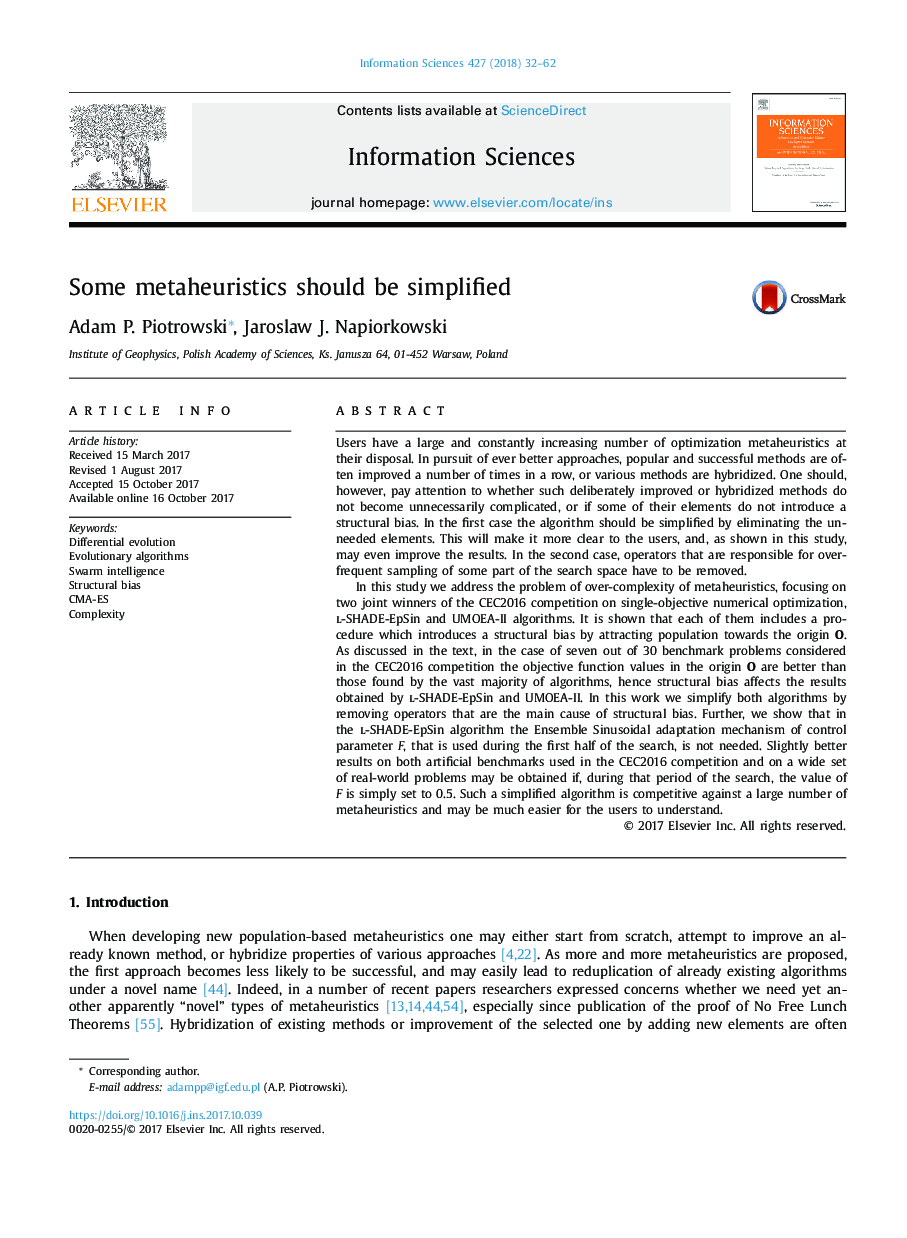| Article ID | Journal | Published Year | Pages | File Type |
|---|---|---|---|---|
| 6856996 | Information Sciences | 2018 | 31 Pages |
Abstract
In this study we address the problem of over-complexity of metaheuristics, focusing on two joint winners of the CEC2016 competition on single-objective numerical optimization, l-SHADE-EpSin and UMOEA-II algorithms. It is shown that each of them includes a procedure which introduces a structural bias by attracting population towards the origin O. As discussed in the text, in the case of seven out of 30 benchmark problems considered in the CEC2016 competition the objective function values in the origin O are better than those found by the vast majority of algorithms, hence structural bias affects the results obtained by l-SHADE-EpSin and UMOEA-II. In this work we simplify both algorithms by removing operators that are the main cause of structural bias. Further, we show that in the l-SHADE-EpSin algorithm the Ensemble Sinusoidal adaptation mechanism of control parameter F, that is used during the first half of the search, is not needed. Slightly better results on both artificial benchmarks used in the CEC2016 competition and on a wide set of real-world problems may be obtained if, during that period of the search, the value of F is simply set to 0.5. Such a simplified algorithm is competitive against a large number of metaheuristics and may be much easier for the users to understand.
Related Topics
Physical Sciences and Engineering
Computer Science
Artificial Intelligence
Authors
Adam P. Piotrowski, Jaroslaw J. Napiorkowski,
